Suggestions or feedback?
Whether you’re a prospective student or just visiting the Boston area, we invite you to explore our dynamic campus and experience firsthand how MIT is making a better world .
MIT is located in Cambridge, Massachusetts, across the Charles River from Boston, in the vibrant innovation district of Kendall Square . Founded in 1865, MIT established a new kind of independent educational institution relevant to an increasingly industrialized America. Since then, the Institute has built a robust tradition of solving problems in the public interest at the intersection of technology and humanity.

Welcome Center
The MIT Welcome Center is open at 292 Main Street in Kendall Square , conveniently located next to the Kendall/MIT MBTA subway station. Stop by to get guidance about visiting MIT and pick up a campus map (and to use the restroom, fill your water bottle, or access free Wi-Fi and power outlets). The adjacent green space is also a great place to have lunch or take a break. Open Monday through Friday, 9 a.m.–5 p.m., excluding MIT holidays and Institute closures.
The MIT Welcome Center is a gift of Tina and Hamid (SB 1977, SM 1978) Moghadam.
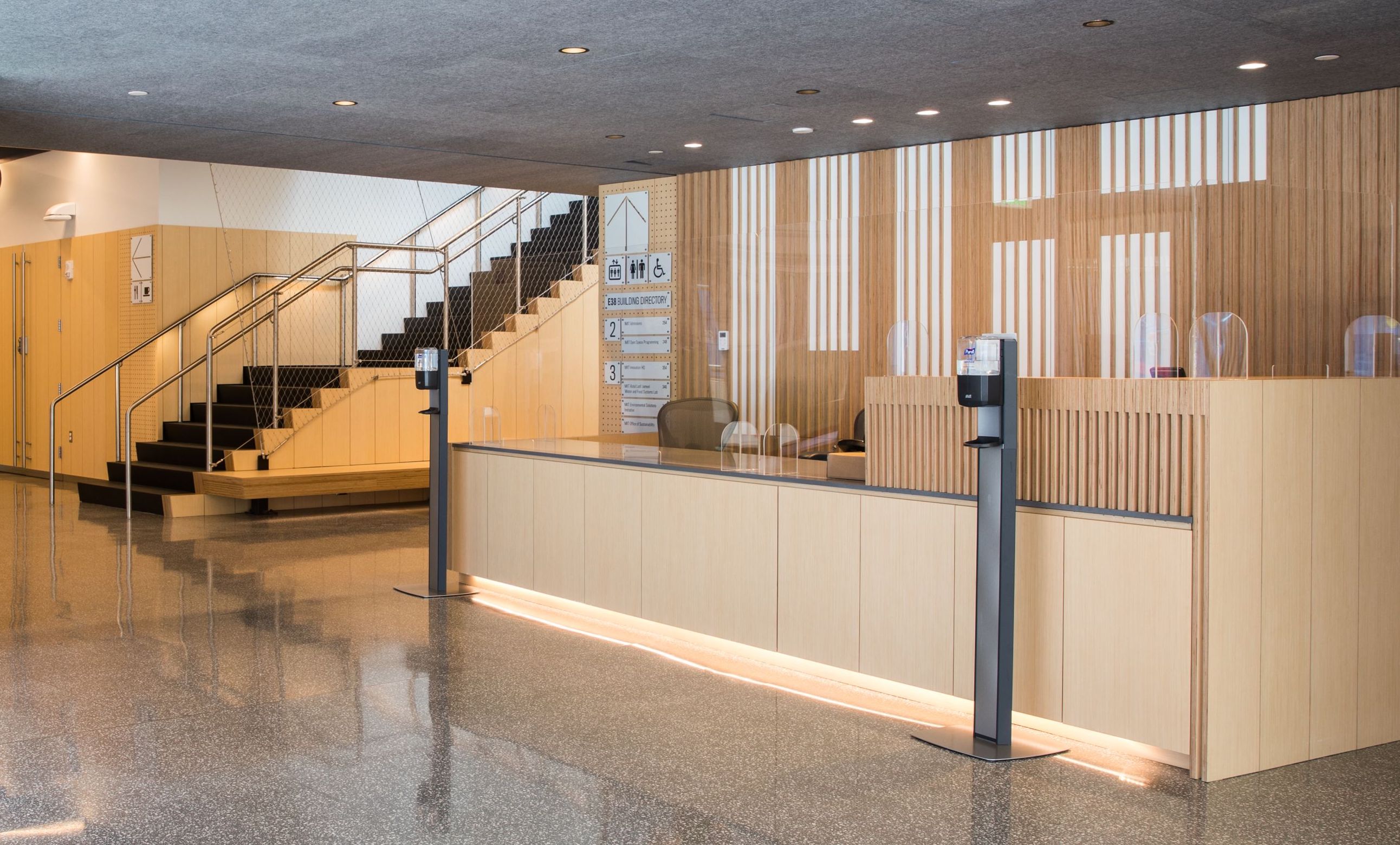
Campus Tours & Information Sessions
The Undergraduate Admissions office hosts virtual and in-person information sessions for prospective students. Visit mitadmissions.org/visit to register. Please note: We are unable to accommodate walk-in guests for information sessions, so please make sure to register in advance.
Prospective graduate students usually arrange visits through individual departments, though the MIT Sloan School of Management and select departments within the School of Engineering offer tours.
Other resources
- School of Engineering audio tour
- List Visual Arts Center tour
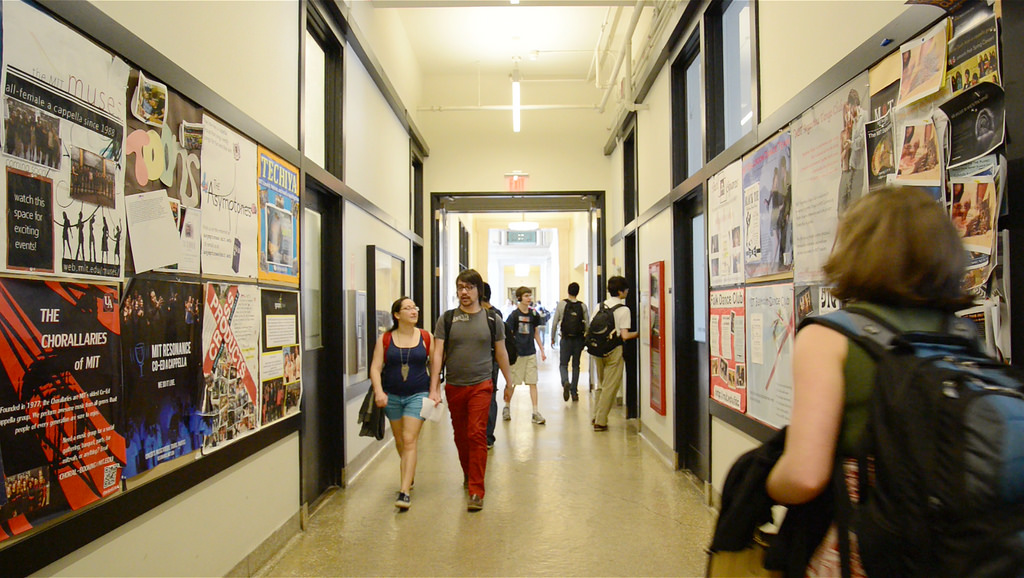
Getting Here & Getting Around
A great place to start your visit is at the MIT Welcome Center, located at 292 Main Street, Cambridge . Parking can be tough here! We recommend public transportation or a taxi/rideshare service (such as Uber or Lyft) to campus.
Via public transportation
Boston’s public transportation system is the MBTA , known as “the T.”
Subway : From any terminal at Logan Airport, take the Silver Line bus to South Station. At South Station, change to the Red Line subway to Kendall/MIT (inbound toward Alewife). The ride should take about 30 minutes and is free.
Bus : The 64, 68, and 85 lines stop near the MIT Welcome Center. The #1 bus stops on Massachusetts Avenue, about a 15-minute walk from the Welcome Center.
Shuttle : The EZ Ride shuttle runs to and from Boston’s North Station, with stops at Kendall Square and around MIT’s campus (Note: EZRide is not operated by the MBTA; fare is $2 cash per trip).
From Logan Airport
Taxi or rideshare : Taxi fare from the airport is about $35–$40, and a rideshare service can range from about $20–$35. During non-rush hour, the ride will take about 15 minutes; during rush hour, it may take 30 minutes or more.
Subway : From any terminal at Logan Airport, take the Silver Line bus to South Station. At South Station, change to the Red Line subway to Kendall/MIT (inbound toward Alewife). The ride should take about 30 minutes.
- South Station, Boston , is the closest train station. South Station is served by the MBTA Red Line, which connects to MIT at the MIT/Kendall stop.
- Bluebikes is the Boston area’s public bike share program. There are several stations around campus for renting or returning a bike. Visitors may purchase an Adventure Pass , which is valid for 24 hours.
Parking in Cambridge and Boston can be expensive and hard to find. Whenever possible, park where you’re staying and use public transportation or a taxi/rideshare service. If you must drive to the campus, on- and off-street parking is available for a fee, but most public parking is not very close to the center of campus. More parking information is available from Parkopedia .
- Accessibility map
- Campus walking tour
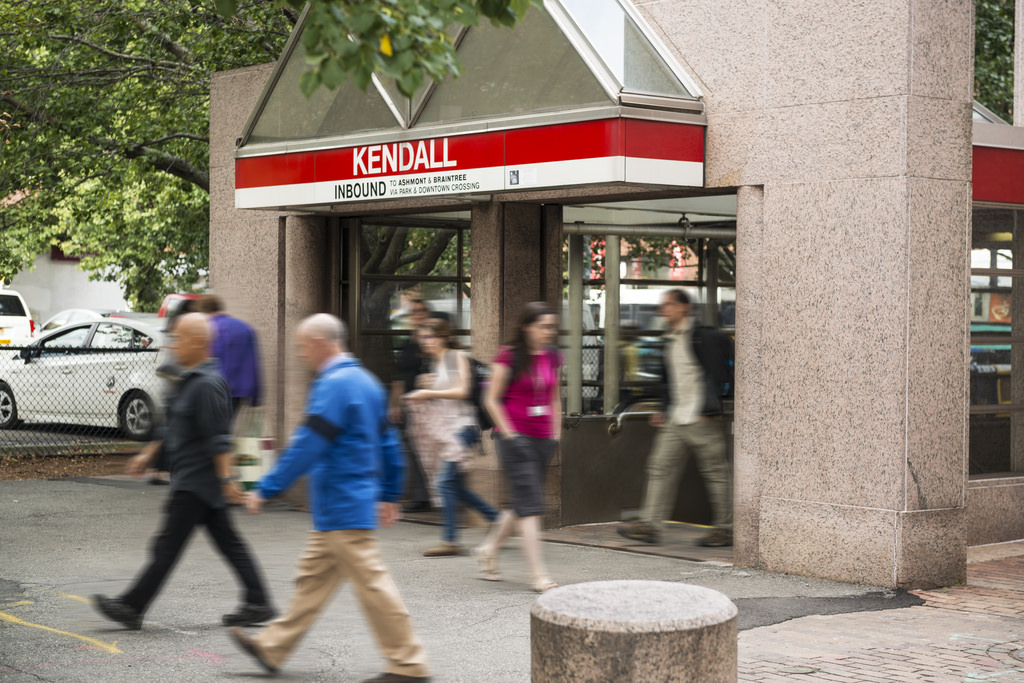
While You’re Here
From art and architecture to history and culture, there is plenty to see and do, both on campus and in the greater Boston area. Explore the MIT Events Calendar to see what's happening on campus. Many events are open to the public.
Visitors are welcome in many campus buildings and our outdoor spaces. See the visitors policy for details.
On the MIT campus
- Stop by Killian Court , the leafy oasis where we hold each year’s Commencement, and gaze up at the Great Dome. (At 8,800 square feet, it’s larger than the domes of St. Paul’s in London and the U.S. Capitol Building. And it was the site of some historic hacks.)
Take in the galleries and exhibits at the MIT Museum —where art, science, and technology intersect—at its new Kendall Square location.
Explore public art on campus , including works by Picasso, Calder, and other major artists.
Visit the List Visual Arts Center , MIT’s contemporary arts museum.
Witness the work being done at the cutting edge of cancer research at the Koch Institute Public Galleries .
See a display of hacks on the Charles M. Vest Student Street in the Stata Center .
Shop at the MIT Coop for MIT-branded apparel and other souvenirs.
Stop by MIT Recreation for some movement during your visit. Guest passes are available.
Around Cambridge and Boston
Trace the footsteps of Boston’s founders and revolutionaries on the Freedom Trail .
Quack your way through a duck tour .
Take a short scenic cruise to the Boston Harbor Islands .
Tour Fenway Park , home of the Boston Red Sox.
Learn about the life and presidency of John F. Kennedy at his namesake library.
Experience the exceptional collection of one of the oldest art institutions in the nation, Boston’s Museum of Fine Arts , or get some hands-on learning at the Museum of Science .
Climb to the top of the Bunker Hill Monument for a panoramic view of Boston.
- Where to eat
- Where to stay
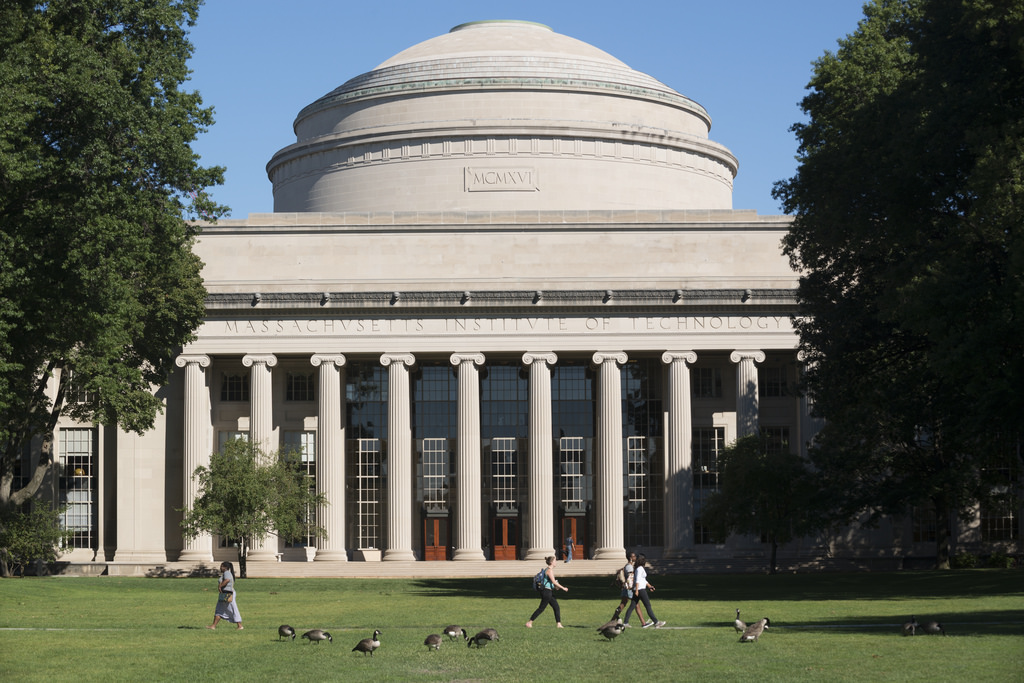
Suggestions or feedback?
MIT News | Massachusetts Institute of Technology
- Machine learning
- Social justice
- Black holes
- Classes and programs
Departments
- Aeronautics and Astronautics
- Brain and Cognitive Sciences
- Architecture
- Political Science
- Mechanical Engineering
Centers, Labs, & Programs
- Abdul Latif Jameel Poverty Action Lab (J-PAL)
- Picower Institute for Learning and Memory
- Lincoln Laboratory
- School of Architecture + Planning
- School of Engineering
- School of Humanities, Arts, and Social Sciences
- Sloan School of Management
- School of Science
- MIT Schwarzman College of Computing
Learning to design with atoms and molecules
Press contact :.
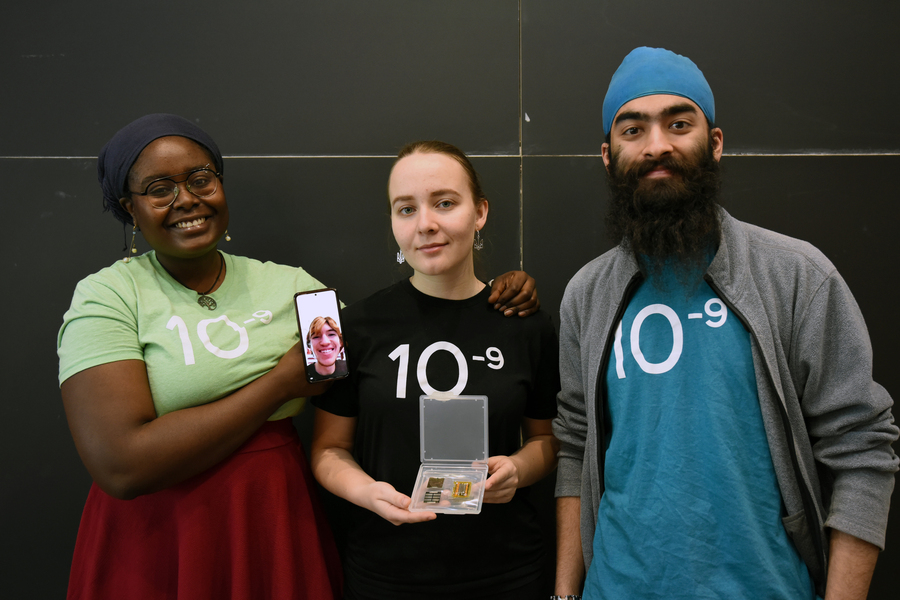
Previous image Next image
MIT undergraduates are learning about nanoscale science and engineering from individual atoms up to full-scale functional systems, and they’re doing it hands-on at MIT.nano.
In class 6.2540 (Nanotechnology: From Atoms to Systems) students spend over nine weeks inside MIT.nano’s labs, learning basic skills that allow them to apply their knowledge of the nanoscale to design and build spectrometers, make quantum dots, fabricate light-emitting diodes (LEDs) and tunneling chemical sensors, and test and package their sensors into active displays and systems.
Bringing the science to life in this way has generated much excitement among the undergraduates. Dahlia Dry, a senior majoring in physics, said her faculty advisor suggested the class would show her the fun in quantum mechanics. “He was right. This class was exactly what middle-school-aged me thought MIT would be like, in all the best ways,” she says.
Word must be getting out about the fun as the class is drawing interest from undergraduates majoring in many different subjects. In fall 2022, six academic departments were represented by the 23 students enrolled.
“This class is quintessentially an ‘MIT’ class,” says Neil Deshmukh, an EECS junior. “Since coming to campus, I've always wanted to take a class where we were free to build nearly any idea, with access to state-of-the-art equipment and amazing instructors. In 6.2540, that's exactly what we did, and it was one of the best experiences I've had.”
The class is taught by three EECS professors: Farnaz Niroui, the EE Landsman Career Development Assistant Professor; Rajeev Ram, professor of electrical engineering; and Tayo Akinwande, the Thomas and Gerd Perkins Professor of Electrical Engineering and Computer Science.
“In this class we take a design approach, rather than the more common abstract and theoretical style,” explains Niroui. “We teach the fundamentals of quantum mechanics and nanoscale science by directly relating them to the design and engineering of diverse technologies.”
For this reason, the lectures are closely integrated with design projects and weekly lab modules. Starting the very first week, the students are inside the lab, learning to work in a cleanroom and acquiring the basic nanofabrication, processing, and characterization skills to investigate and implement concepts they have learned in the lectures — from fundamental science to material synthesis, device design, and full systems integration.
Rather than watching staff run the equipment, the undergraduates do the work themselves using simplified engineering and fabrication flows. “This was the most fascinating class I have taken at MIT, and that's despite it being in an area that I knew nothing about beforehand,” says EECS sophomore Eric Zhang. “It opened my eyes to an entire research and engineering field that I would never have known about otherwise.”
Each week’s lab work builds off the ones before, starting at the nano- and micro-level and building up to full-scale devices. Students learn about light-matter interactions and build their own microscopes and spectrometers, then use their new tools to characterize the materials and devices they make throughout the term. Further into the semester, they investigate the power of quantum mechanics and the design of nanomaterials through chemical synthesis of quantum dots, tuning their emission color by controlling their size. The following week, they use quantum dots to design and make an LED. This lab is followed by design and fabrication of a quantum tunneling chemical sensor based on graphene-polymer composites. In the final lab, the students use these LEDs and tunneling sensors to integrate a pixelated LED display into a handheld sensor-display system.
For their end-of-semester projects, the students split into teams to design and build something entirely from scratch, provided their idea uses the science, materials, and techniques covered in the class and has at least one feature smaller than 100 nanometers. In the fall 2022 semester, the undergraduates fabricated memristors for next-generation unconventional computing; nature-inspired structured lenses to improve LED efficiency; flexible graphene supercapacitors for solar energy storage; a flexible pulse oximeter; tandem solar cells based on band-gap engineering; and a transistor using atomically-thin 2D materials.
In addition to hands-on experience using tools for nanoscale engineering inside MIT.nano’s cleanroom and other labs, 6.2540 provides the opportunity for undergraduates to present at the Microsystems Annual Research Conference (MARC), co-sponsored by the Microsystems Technology Laboratories and MIT.nano. The long-standing event, which brings together over 200 MIT faculty, students, and industry partners each year, traditionally features graduate-level research.
Share this news article on:
Related links.
- Akintunde Ibitayo Akinwande
- Farnaz Niroui
- Microsystems Technology Laboratories
Related Topics
- Electrical Engineering & Computer Science (eecs)
- Mathematics
- Mechanical engineering
- Research Laboratory of Electronics
- Nanoscience and nanotechnology
- Quantum mechanics
- Undergraduate
- Education, teaching, academics
Related Articles
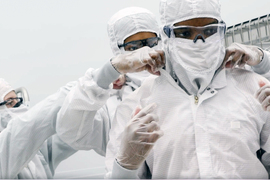
Class opens the door to a new world of mechanical engineering
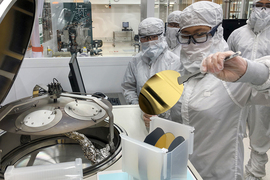
Clean room as classroom
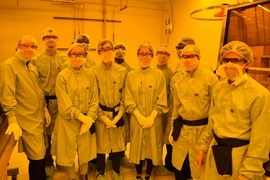
Meet the first undergraduate users of MIT.nano
Previous item Next item
More MIT News
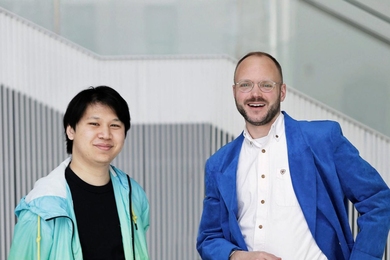
How AI might shape LGBTQIA+ advocacy
Read full story →
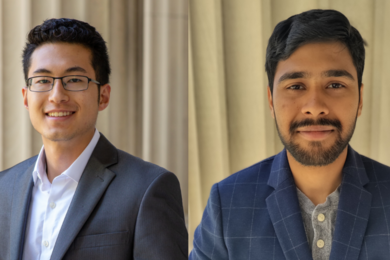
Two MIT PhD students awarded J-WAFS fellowships for their research on water
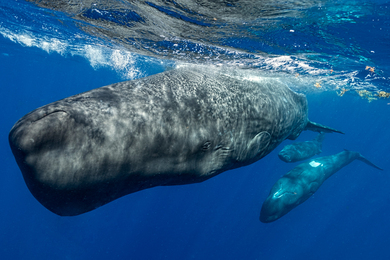
Exploring the mysterious alphabet of sperm whales
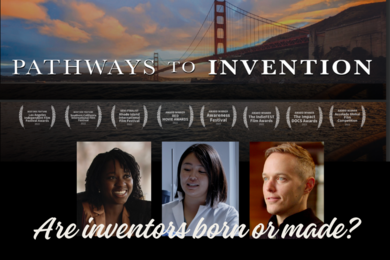
“Pathways to Invention” documentary debuts on PBS, streaming

This sound-suppressing silk can create quiet spaces
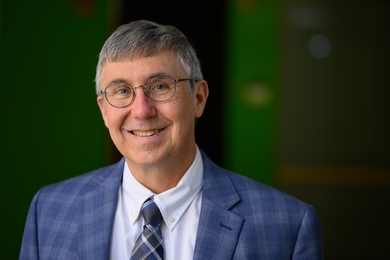
William Green named director of MIT Energy Initiative
- More news on MIT News homepage →
Massachusetts Institute of Technology 77 Massachusetts Avenue, Cambridge, MA, USA
- Map (opens in new window)
- Events (opens in new window)
- People (opens in new window)
- Careers (opens in new window)
- Accessibility
- Social Media Hub
- MIT on Facebook
- MIT on YouTube
- MIT on Instagram
- Skip to Content
- Bulletin Home

- This Is MIT >
- Undergraduate Education >
- Around Campus
- Academic Program
- Administration
- Arts at MIT
- Campus Media
- Fraternities, Sororities, and Independent Living Groups
- Medical Services
- Priscilla King Gray Public Service Center
- Religious Organizations
- Student Government
- Work/Life and Family Resources
- Advising and Support
- Digital Learning
- Disability and Access Services
- Information Systems and Technology
- Student Financial Services
- Writing and Communication Center
- Major Course of Study
- General Institute Requirements
- Independent Activites Period
- Undergraduate Research Opportunities Program
- First-Year Advising Seminars
- Interphase EDGE/x
- Edgerton Center
- Grading Options
- Study at Other Universities
- Internships Abroad
- Career Advising and Professional Development
- Teacher Licensure and Education
- ROTC Programs
- Financial Aid
- Medical Requirements
- Graduate Study at MIT
- General Degree Requirements
- Other Institutions
- Registration
- Term Regulations and Examination Policies
- Academic Performance and Grades
- Policies and Procedures
- Privacy of Student Records
- Abdul Latif Jameel Poverty Action Lab
- Art, Culture, and Technology Program
- Broad Institute of MIT and Harvard
- Center for Archaeological Materials
- Center for Bits and Atoms
- Center for Clinical and Translational Research
- Center for Collective Intelligence
- Center for Computational Science and Engineering
- Center for Constructive Communication
- Center for Energy and Environmental Policy Research
- Center for Environmental Health Sciences
- Center for Global Change Science
- Center for International Studies
- Center for Real Estate
- Center for Transportation & Logistics
- Computer Science and Artificial Intelligence Laboratory
- Concrete Sustainability Hub
- D-Lab
- Deshpande Center for Technological Innovation
- Division of Comparative Medicine
- Haystack Observatory
- Initiative on the Digital Economy
- Institute for Medical Engineering and Science
- Institute for Soldier Nanotechnologies
- Institute for Work and Employment Research
- Internet Policy Research Initiative
- Joint Program on the Science and Policy of Global Change
- Knight Science Journalism Program
- Koch Institute for Integrative Cancer Research
- Laboratory for Financial Engineering
- Laboratory for Information and Decision Systems
- Laboratory for Manufacturing and Productivity
- Laboratory for Nuclear Science
- Legatum Center for Development and Entrepreneurship
- Lincoln Laboratory
- Martin Trust Center for MIT Entrepreneurship
- Materials Research Laboratory
- McGovern Institute for Brain Research
- Microsystems Technology Laboratories
- MIT Center for Art, Science & Technology
- MIT Energy Initiative
- MIT Environmental Solutions Initiative
- MIT Kavli Institute for Astrophysics and Space Research
- MIT Media Lab
- MIT Office of Innovation
- MIT Open Learning
- MIT Portugal Program
- MIT Professional Education
- MIT Sea Grant College Program
- Nuclear Reactor Laboratory
- Operations Research Center
- Picower Institute for Learning and Memory
- Plasma Science and Fusion Center
- Research Laboratory of Electronics
- Simons Center for the Social Brain
- Singapore-MIT Alliance for Research and Technology Centre
- Sociotechnical Systems Research Center
- Whitehead Institute for Biomedical Research
- Women's and Gender Studies Program
- Architecture (Course 4)
- Art and Design (Course 4-B)
- Art, Culture, and Technology (SM)
- Media Arts and Sciences
- Planning (Course 11)
- Urban Science and Planning with Computer Science (Course 11-6)
- Aerospace Engineering (Course 16)
- Engineering (Course 16-ENG)
- Biological Engineering (Course 20)
- Chemical Engineering (Course 10)
- Chemical-Biological Engineering (Course 10-B)
- Chemical Engineering (Course 10-C)
- Engineering (Course 10-ENG)
- Engineering (Course 1-ENG)
- Electrical Engineering and Computer Science (Course 6-2)
- Electrical Science and Engineering (Course 6-1)
- Computation and Cognition (Course 6-9)
- Computer Science and Engineering (Course 6-3)
- Computer Science and Molecular Biology (Course 6-7)
- Electrical Engineering and Computer Science (MEng)
- Computer Science and Molecular Biology (MEng)
- Health Sciences and Technology
- Archaeology and Materials (Course 3-C)
- Materials Science and Engineering (Course 3)
- Materials Science and Engineering (Course 3-A)
- Materials Science and Engineering (PhD)
- Mechanical Engineering (Course 2)
- Mechanical and Ocean Engineering (Course 2-OE)
- Engineering (Course 2-A)
- Nuclear Science and Engineering (Course 22)
- Engineering (Course 22-ENG)
- Anthropology (Course 21A)
- Comparative Media Studies (CMS)
- Writing (Course 21W)
- Economics (Course 14-1)
- Mathematical Economics (Course 14-2)
- Data, Economics, and Design of Policy (MASc)
- Economics (PhD)
- Global Studies and Languages (Course 21G)
- History (Course 21H)
- Linguistics and Philosophy (Course 24-2)
- Philosophy (Course 24-1)
- Linguistics (SM)
- Literature (Course 21L)
- Music (Course 21M-1)
- Theater Arts (Course 21M-2)
- Political Science (Course 17)
- Science, Technology, and Society/Second Major (STS)
- Business Analytics (Course 15-2)
- Finance (Course 15-3)
- Management (Course 15-1)
- Biology (Course 7)
- Chemistry and Biology (Course 5-7)
- Brain and Cognitive Sciences (Course 9)
- Chemistry (Course 5)
- Earth, Atmospheric and Planetary Sciences (Course 12)
- Mathematics (Course 18)
- Mathematics with Computer Science (Course 18-C)
- Physics (Course 8)
- Department of Electrical Engineering and Computer Science
- Institute for Data, Systems, and Society
- Chemistry and Biology
- Climate System Science and Engineering
- Computation and Cognition
- Computer Science and Molecular Biology
- Computer Science, Economics, and Data Science
- Humanities and Engineering
- Humanities and Science
- Urban Science and Planning with Computer Science
- African and African Diaspora Studies
- American Studies
- Ancient and Medieval Studies
- Applied International Studies
- Asian and Asian Diaspora Studies
- Biomedical Engineering
- Energy Studies
- Entrepreneurship and Innovation
- Environment and Sustainability
- Latin American and Latino/a Studies
- Middle Eastern Studies
- Polymers and Soft Matter
- Public Policy
- Russian and Eurasian Studies
- Statistics and Data Science
- Women's and Gender Studies
- Advanced Urbanism
- Computational and Systems Biology
- Computational Science and Engineering
- Design and Management (IDM & SDM)
- Joint Program with Woods Hole Oceanographic Institution
- Leaders for Global Operations
- Microbiology
- Music Technology and Computation
- Operations Research
- Real Estate Development
- Social and Engineering Systems
- Supply Chain Management
- Technology and Policy
- Transportation
- School of Architecture and Planning
- School of Engineering
- Aeronautics and Astronautics Fields (PhD)
- Artificial Intelligence and Decision Making (Course 6-4)
- Biological Engineering (PhD)
- Nuclear Science and Engineering (PhD)
- School of Humanities, Arts, and Social Sciences
- Humanities (Course 21)
- Humanities and Engineering (Course 21E)
- Humanities and Science (Course 21S)
- Sloan School of Management
- School of Science
- Brain and Cognitive Sciences (PhD)
- Earth, Atmospheric and Planetary Sciences Fields (PhD)
- Interdisciplinary Programs (SB)
- Climate System Science and Engineering (Course 1-12)
- Computer Science, Economics, and Data Science (Course 6-14)
- Interdisciplinary Programs (Graduate)
- Computation and Cognition (MEng)
- Computational Science and Engineering (SM)
- Computational Science and Engineering (PhD)
- Computer Science, Economics, and Data Science (MEng)
- Leaders for Global Operations (MBA/SM and SM)
- Music Technology and Computation (SM and MASc)
- Real Estate Development (SM)
- Statistics (PhD)
- Supply Chain Management (MEng and MASc)
- Technology and Policy (SM)
- Transportation (SM)
- Aeronautics and Astronautics (Course 16)
- Aerospace Studies (AS)
- Civil and Environmental Engineering (Course 1)
- Comparative Media Studies / Writing (CMS)
- Comparative Media Studies / Writing (Course 21W)
- Computational and Systems Biology (CSB)
- Computational Science and Engineering (CSE)
- Concourse (CC)
- Data, Systems, and Society (IDS)
- Earth, Atmospheric, and Planetary Sciences (Course 12)
- Economics (Course 14)
- Edgerton Center (EC)
- Electrical Engineering and Computer Science (Course 6)
- Engineering Management (EM)
- Experimental Study Group (ES)
- Global Languages (Course 21G)
- Health Sciences and Technology (HST)
- Linguistics and Philosophy (Course 24)
- Management (Course 15)
- Media Arts and Sciences (MAS)
- Military Science (MS)
- Music and Theater Arts (Course 21M)
- Naval Science (NS)
- Science, Technology, and Society (STS)
- Special Programs
- Supply Chain Management (SCM)
- Urban Studies and Planning (Course 11)
- Women's and Gender Studies (WGS)
The cost of attendance for the 2023–2024 academic year is $82,730. This number is actually much lower than what it costs MIT to educate students . For more detailed information regarding the cost of attendance, including specific costs for tuition and fees, books and supplies, housing and food as well as transportation, please visit the SFS website .
However, most students pay far less than the total cost of attendance because of our need-based financial aid . A detailed estimate of the cost of attendance (prior to financial aid) is provided by Student Financial Services.
Key points:
- Tuition is prorated if a student withdraws .
- In addition to tuition, there may be fees that are also charged each term, such as the student activity fee.
- All students automatically receive basic medical coverage through MIT Health as part of their tuition. Additional medical coverage for the student and/or families is available through the MIT Student Health Insurance Plan . See Student Health Insurance and Medical Requirements for further information.
Visiting Student Fees
The table below reflects standard undergraduate tuition rates for the 2023–2024 academic year. Amounts are per term, unless noted.
Undergraduate tuition, per term, fall and spring, 2023–2024
Regular undergraduate students who have permission to take only a few subjects are initially charged full tuition. They may then apply to have their tuition charged at the rate of $925 per unit with the approval of the faculty advisor. In such cases, there is a minimum fee of $5,550 for subjects and a minimum of $1,850 for the SB thesis. Registration for 32 or more units will be assessed the full tuition charge. Upon recommendation of a department, the Office of the Vice Chancellor may set a special tuition rate in unusual circumstances. Financial aid will be adjusted based on enrollment costs. Some classes (including ROTC and classes taken on listener status) are not included in the determination of financial aid eligibility.
Internship and cooperative programs offered by MIT provide industrial and research experience through a series of work assignments interwoven with regular study at the Institute. The tuition fee for these programs is the same as that for other regular undergraduate students.
Visiting Student Fees
Students who are pursuing a degree at an institution of higher education other than MIT and have been invited by faculty in an MIT department, laboratory, or center to do research here may apply for visiting student status. Current regular or special MIT students, or MIT students who have withdrawn or are on a leave of absence, are not eligible.
Visiting students are subject to a monthly fee that includes registration, MIT's Student Health Insurance Plan (SHIP) , and student life fees. The fee entitles visiting students to conduct research, use our fitness facilities, participate in student life programming, and have access to care at MIT Health. Full monthly fees are charged regardless of whether the student starts on the first or the 15th of the month. The total fee for the duration of their stay must be paid in full and in advance. Additional costs will be applied for those who wish to enroll family members in SHIP.
Visiting student fees, 2023–2024
Withdrawal .
A student withdrawing before the start of a term is not charged any tuition for that term, and any tuition payments previously made for that term will be refunded. Students withdrawing during the fall or spring term are charged one-twelfth of the stated tuition for the term for each week from the starting date of the term, with a minimum two-week charge. A student is financially obligated to the Institute for the tuition appropriate to the program approved by his or her faculty advisor at the beginning of the term. Any subsequent reduction in fees is based on the date that cancellation of subject or withdrawal from the Institute is effected. At that time, any excess payments which the student has made will be refunded.
For more detailed information regarding the cost of attendance, including specific costs for tuition and fees, books and supplies, housing and food as well as transportation, please visit the SFS website .
If the student receives financial aid through one of the federal student financial aid programs, and aid is reduced as a consequence of the reduced tuition, the reduction in aid will be made in accordance with current federal regulations. Contact Student Financial Services for more information.
All students pay a student life fee each term. Late registration or applications may result in additional fees. See the Academic Calendar for relevant dates and deadlines.
Miscellaneous student fees*, 2023–2024
Processing charges for late changes in registration.
A late change in registration , which requires a petition to the Committee on Academic Performance, is defined as adding a subject after the fifth week or dropping a subject during the last three weeks of a term. The processing charge for late changes is $25. There is an additional charge of $25 for a change judged by the Committee to result from the student's neglect.
Payment of tuition entitles all regular and special students to receive many health care services at MIT Health at no charge. The MIT Student Health Insurance Plan (SHIP) covers hospitalization due to accidents or illness, along with other services and prescription medications, and meets the state’s requirement for comprehensive health insurance.
Enrollment in MIT SHIP is automatic for full-time students, unless they can demonstrate that they have comparable coverage through another insurance program, in which case they may submit an online request to waive coverage . Complete details on MIT SHIP are available on the MIT Medical website.
MIT Student Health Insurance Plan, cost per year for single student, 2023–2024
Updated rates for the MIT Student Insurance Plan can be found on the MIT Health website. Students can also purchase MIT SHIP coverage for family members, including partners and dependents. Refer to the Medical Requirements section for additional details or read more about the MIT Student Health Insurance Plan .
Undergraduate Payment of Tuition and Other Institute Charges
An individual who registers as a student at MIT agrees to pay all charges on their account when due and acknowledges that the Institute may charge a hold fee, suspend registration, revoke Institute services, and/or withhold the degree if these charges are not paid.
Student Financial Services (SFS) gathers, bills, and collects student charges and provides a student account statement of all activity. These charges originate in the offices from which the student receives Institute services. SFS bills by posting a monthly billing statement on MITPay —our secure, online billing and payment system. Statements are posted on or around the 10th of the month. SFS sends students a monthly email reminder to check their statement and pay any balance due. The statement includes charges (e.g., tuition, fees, housing, and library fees), payments (financial aid, tuition awards), additional amounts due, and payment deadlines.
To access MITPay, log in to WebSIS and use the MITPay link to view your account and make payments. Visit the SFS website for information about MITPay and other payment methods .
Payment in full or a satisfactory arrangement for payment is due by August 1 for the fall term and by January 1 for the spring term. New charges that occur after the initial statement will appear on a subsequent statement. If a student anticipates that they may not be able to pay the entire amount due by the term bill due date, there is a monthly payment plan available for students.
The MIT Monthly Payment Plan is an installment arrangement that allows students to pay their balance in monthly installments interest-free. The terms and conditions of the monthly payment plan are available on the SFS website. Enrollment can be accessed through MITPay.
SFS also offers information on federal student loan programs as additional options for eligible U.S. citizens and permanent residents.
A student who does not pay the balance due or make satisfactory arrangements for doing so will have a registration or degree hold placed on their account, and they will be charged a hold fee of $100. The balance due, including the hold fee, must be paid in full before the hold can be released.
Students who have unanticipated financial situations during the term should contact their financial aid counselor to develop a plan of action. There are also resources available via Student Support Services . MIT policies are designed to allow students sufficient time to resolve their financial difficulties. Students owing fall term balances have from July to November to pay their account balance before a hold is imposed; students owing spring term balances have from December to April.
Notifications to Undergraduates with Unpaid Balances
In the fifth week of the term, SFS will reach out to undergraduates who have an unpaid balance on their student account and who have not made satisfactory arrangements for payment of the balance. These students will be notified of MIT’s financial hold policy through the billing system as well as by email. SFS will send out a second reminder email and billing notification after the 11th week of the term, again notifying students of MIT’s financial hold policy.
Policy on Undergraduate Financial Holds
Undergraduate students are subject to the financial hold policy adopted by the Committee on the Undergraduate Program (CUP) and the Committee on Academic Performance (CAP) in 1998. Students who have not paid their outstanding student account balance, made satisfactory arrangements with SFS to pay the balance, or completed a financial aid application will lose access to student services for subsequent terms. Removal of services includes the right to register for the term, Athena access, MIT housing, dining, the MIT Card, and library access. Students who have not made efforts to resolve their financial situation will not be allowed to register, will not receive credit retroactively, and will be charged a $100 hold fee. The student account must be paid in full before a degree can be awarded.
Removal of Services and Other Actions
Undergraduate students who have not paid or made satisfactory arrangements for payment of unpaid balances from the previous term may not register for subsequent terms and may be restricted from Institute services. When students have not made satisfactory payment arrangements by Registration Day of the subsequent term, SFS and other Institute offices may take the following actions:
- Suspending the right to live in MIT housing.
- Deactivating the MIT Card, leading to loss of access to all services the card provides. These services include but are not limited to the libraries, the dining system, computing resources, and Institute housing.
- Suspending all computer services, including Athena access and use of MIT licensed software.
- Students will be permitted to retain an mit.edu email address which will be forwarded to a specified outside email provider until the normal graduation date.
- Removing the student from student payroll and UROP systems.
- Removing the student from class rosters and barring participation in class projects and assignments.
- Not reviewing the student’s financial aid application for the upcoming academic year until their past due balance has been paid.
Student accounts unpaid after the student has left MIT for any reason may be reported to credit bureau agencies and/or sent to an outside collection agency and assessed additional fees on the outstanding balance. Please visit the SFS website for more information and to review the Student Financial Responsibility Statement.

Print this page.
The PDF includes all information on this page and its related tabs. Subject (course) information includes any changes approved for the current academic year.
- Diversity & Inclusion
- Community Values
- Visiting MIT Physics
- People Directory
- Faculty Awards
- History of MIT Physics
- Policies and Procedures
- Departmental Committees
- Academic Programs Team
- Finance Team
- Meet the Academic Programs Team
- Prospective Students
- Requirements
- Employment Opportunities
- Research Opportunities
Graduate Admissions
- Doctoral Guidelines
- Financial Support
- Graduate Student Resources
- PhD in Physics, Statistics, and Data Science
- MIT LEAPS Program
- for Undergraduate Students
- for Graduate Students
- Mentoring Programs Info for Faculty
- Non-degree Programs
- Student Awards & Honors
- Astrophysics Observation, Instrumentation, and Experiment
- Astrophysics Theory
- Atomic Physics
- Condensed Matter Experiment
- Condensed Matter Theory
- High Energy and Particle Theory
- Nuclear Physics Experiment
- Particle Physics Experiment
- Quantum Gravity and Field Theory
- Quantum Information Science
- Strong Interactions and Nuclear Theory
- Center for Theoretical Physics
- Affiliated Labs & Centers
- Program Founder
- Competition
- Donor Profiles
- Patrons of Physics Fellows Society
- Giving Opportunties
- physics@mit Journal: Fall 2023 Edition
- Events Calendar
- Physics Colloquia
- Search for: Search
Admissions Information for Prospective Graduate Students
Thank you for considering the PhD program in Physics at MIT. Information regarding our graduate program and our application process can be found below and through the following webpages and other links on this page. If your questions are not answered after reviewing this information, please contact us at [email protected] .
Here are some links to pages relevant to prospective students:
- Material Required for a Complete Application , and information about When/How to Apply can be found below on this page.
- We have an FAQ which should help to answer many questions, and we provide Application Assistance from staff and students if you don’t find what you need in the FAQ.
- Additional Guidance about the application itself, along with examples, can be found on a separate page. The graduate application is available at https://apply.mit.edu/apply/ .
- General information about the graduate program and research areas in the physics department may also be of use.
- MSRP (MIT Summer Research Program) is designed to give underrepresented and underserved students access to an MIT research experience, pairing each student with a faculty member who will oversee the student conducting a research project at MIT.
Statement regarding admissions process during COVID Pandemic (Updated Summer 2023)
MIT has adopted the following principle: MIT’s admissions committees and offices for graduate and professional schools will take the significant disruptions of the COVID-19 outbreak in 2020 into account when reviewing students’ transcripts and other admissions materials as part of their regular practice of performing individualized, holistic reviews of each applicant.
In particular, as we review applications now and in the future, we will respect decisions regarding the adoption of Pass/No Record (or Credit/No Credit or Pass/Fail) and other grading options during the unprecedented period of COVID-19 disruptions, whether those decisions were made by institutions or by individual students. We also expect that the individual experiences of applicants will richly inform applications and, as such, they will be considered with the entirety of a student’s record.
Ultimately, even in these challenging times, our goal remains to form graduate student cohorts that are collectively excellent and composed of outstanding individuals who will challenge and support one another.
Questions or concerns about this statement should be directed to the Physics Department ( [email protected] ).
Also, to stay up-to-date on the latest information on MIT and the COVID-19 pandemic at now.mit.edu .

Applying to the MIT Department of Physics
We know that the application process can be time-consuming, stressful, and costly. We are committed to reducing these barriers and to helping all applicants receive a full and fair assessment by our faculty reviewers. Help is available from the Physics Graduate Admissions Office at [email protected] and additional assistance from current students is offered during the admissions season. Further details are described at the end of this page in our Assistance for Prospective Applicants section.
The list below describes the important elements of a complete application. Please reach out to us at [email protected] if you have a concern or logistical difficulty that could prevent you from providing your strongest application.
Required for a Complete Application
1. online application and application fee.
- MIT Graduate Admissions Online Graduate Application
- Application Fee: $75 NOTE: Applicants who feel that this fee may prevent them from applying should send a short email to [email protected] to describe their general reasons for requesting a waiver. We will follow up with information about how to apply for a formal ‘application fee waiver’. Additional documents may be required, so additional time will be necessary to process requests. Either the fee or a formal fee waiver is required with a submitted application.
2. University Transcript(s)
Unofficial transcripts are sufficient for our initial review, with final transcripts required as a condition of matriculation for successful applicants. Applicants should include a scan of their transcript(s) and, if a degree is in progress, should include a list of the class subjects being taken in the current semester. The GradApply portal will allow applicants to log back into the application after the deadline to add their Fall term grades when they are available.
Note: We will respect decisions regarding the adoption of Pass/No Record (or Credit/No Credit or Pass/Fail) and other grading options during the unprecedented period of COVID-19 disruptions, whether those decisions were made by institutions or by individual students.
3. Standardized Test Results
- GRE Tests are not required for graduate applications submitted in 2023. The Physics subject GRE (PGRE) will be optional in 2023 and our department does not require results from the General GRE test.
- TOEFL or IELTS Test or a waiver is required for non-native English speakers. MIT’s TOEFL school code is 3514; the code for the Department of Physics is 76. IELTS does not require a code. Eligibility for TOEFL/IELTS waivers is in our FAQ section .
- Self-reported scores are sufficient for our initial application screening, with official scores required for admitted students as a condition of their offer. Applicants should attach a scanned copy of their test score report.
4. Letters of Recommendation
Letters should include any individual work applicants have done and/or areas where they have special strengths. It is possible to submit up to 6 total letters, but 3 are sufficient for a complete application and committee members may evaluate applications based on the first three letters that they read.
5. Statement of Objectives
Research is central to graduate study in physics. The Statement of Objectives/Purpose should include descriptions of research projects, aptitude and achievements as completely as possible. This important part of the application provides an opportunity to describe any interests, skills, and background relative to the research areas selected on the application form. Applicants should share anything that prepares them for graduate studies and describe their proudest achievements.
Additional Application Materials
- Research, Teaching, and Community Engagement – Any special background or achievement that prepares the applicant for Physics graduate studies at MIT. This may include research at their undergraduate school as part of their Bachelor or Master degree, or summer research at another program or school. We also value our student’s contributions to their community on a variety of scales (from institutional to societal) and we encourage applicants to tell us about their teaching and community engagement activities. The “experience” questions are intended to provide a CV-like listing of achievements, some of which may be elaborated on in the “Statement of Objectives” and/or the optional “Personal Statement”.
- Publications, Talks, and Merit Based Recognition – Recognition of success in research, academics, and outreach can take many forms, including publications, talks, honors, prizes, awards, fellowships, etc. This may include current nominations for scholarships or papers submitted for publication.
- Optional Personal Statement – Members of our community come from a wide variety of backgrounds and experiences. We welcome any personal information that will help us to evaluate applications holistically and will provide context for the applicant’s academic achievements. This statement may include extenuating circumstances, significant challenges that were overcome, a non-traditional educational background, description of any advocacy or values work, or other information that may be relevant.
- Detailed instructions for each application section, and many examples , can be found on the “ Additional Guidance ” page. The detailed instructions are lengthy, and are intended to be read only “as needed” while you work on your application (i.e., you don’t need to go read the whole thing before you start).
When/How to Apply
When : Applications can be submitted between September 15 and December 15 by 11:59pm EST for the following year.
How : The application is online at https://apply.mit.edu/apply/
Application Assistance
Faculty, students, and staff have collaborated to provide extensive guidance to prospective applicants to our graduate degree program. Resources include several department webpages to inform prospective applicants about our PhD degree requirements and to help applicants as they assemble and submit their materials. In addition to staff responses to emails, current graduate students will answer specific individual questions, give one admissions-related webinar, and provide a mentorship program for selected prospective applicants.
During the application season, prospective students may request additional information from current students about the admissions process, graduate student life, or department culture, either as a response to a specific individual email question or for more in-depth assistance. Applicants will benefit most from contacting us early in the process, when current students and staff will be available to respond to questions and mentor selected applicants. After mid-November, department staff will continue to field questions through the admission process.
Here are some resources for prospective applicants:
- Our website provides answers to many frequently-asked admissions questions .
- Admissions staff are available for questions at [email protected] .
- Current students collaborate with staff to answer specific questions emailed to [email protected] .
- PhysGAAP Webinars are designed to provide student perspectives on the application and admissions processes in an interactive format. This year’s webinar will take place on Wednesday, Nov 1st, 2023 from 10am to 12pm EDT. Sign up here: https://mit.co1.qualtrics.com/jfe/form/SV_ah13eCcEh0cKW7I
- PhysGAAP Mentoring provides in-depth guidance through the application process.
Student-led Q&A Service
A team of our current graduate students is available to share their experience and perspectives in response to individual questions which may fall under any of the following categories:
- Coursework/research (e.g., How do I choose between two research areas and how do I find a potential research advisor?)
- Culture (e.g., What is it like to be a student of a particular identity at MIT?)
- Student life (e.g., What clubs or extracurriculars do graduate students at MIT take part in?)
To request a response from the current students, please send an email to [email protected] and indicate clearly in the subject line or first sentence that you would like your email forwarded to the PhysGAAP student team. Depending on the scope of your question, department staff will send your email to current students.
We encourage you to reach out as early as you can to maximize the benefit that this help can provide to you. While the admissions office staff will continue to field your questions throughout the admissions season, current students may not be available to respond to questions sent after November 15.
This student email resource is designed for individual basic questions. More in-depth guidance, especially about the application itself, will be available through the PhysGAAP Webinars and/or PhysGAAP Mentorship Program described below.
Student-led Webinar
A panel of our graduate students hosted a 2-hour long Zoom webinar in late October of 2022 to present information about the application and admissions processes, and to respond to questions on these topics. The webinar addressed general questions about preparing, completing, and submitting the application; what the Admissions Committee is looking for; and the general timeline for the admissions process.
Below is video from our latest webinar that took place on Wednesday, Nov 1st, 2023. Check back here in Fall 2024 for information on our next webinar.
Note: We have compiled a document containing supplementary material for previous PhysGAAP webinars.
Webinar Recordings
Past PhysGAAP Webinars
Please note that the two webinars below are from prior years and may contain outdated information about some topics, such as GRE requirements.
- October 2022
- December 2021
- September 2021
Mentorship for Prospective Applicants
In addition to the materials available through this website, answers to emails sent to the department, or from our graduate student webinars, we also offer one-on-one mentoring for students who desire more in-depth individual assistance. Prospective applicants may apply to the PhysGAAP Mentoring program,, which pairs prospective graduate school applicants with current graduate students who can assist them through the application process, provide feedback on their application materials and insight into graduate school and the MIT Physics Department.
We welcome interest in the PhysGAAP Mentorship program and mentorship applications are open to any prospective applicant. However, our capacity is limited, so we will give preferential consideration to PhysGAAP Mentorship applicants who would most benefit from the program and can demonstrate that they are a good fit.
PhysGAAP Mentoring may a good fit for you if you
- feel like you lack other resources to help you navigate the graduate school application process,
- find the other forms of assistance (online webinars, email at [email protected] ) insufficient to address your needs, and
- think you could benefit from one-on-one application mentorship.
PhysGAAP Mentoring may not be a good fit for you if you
- only have one or two questions that could be answered elsewhere (online webinars, email at [email protected] , or online FAQs), or
- feel like you already have sufficient resources to complete your application (e.g., the PhysGAAP webinars, access to other mentoring services or workshops)
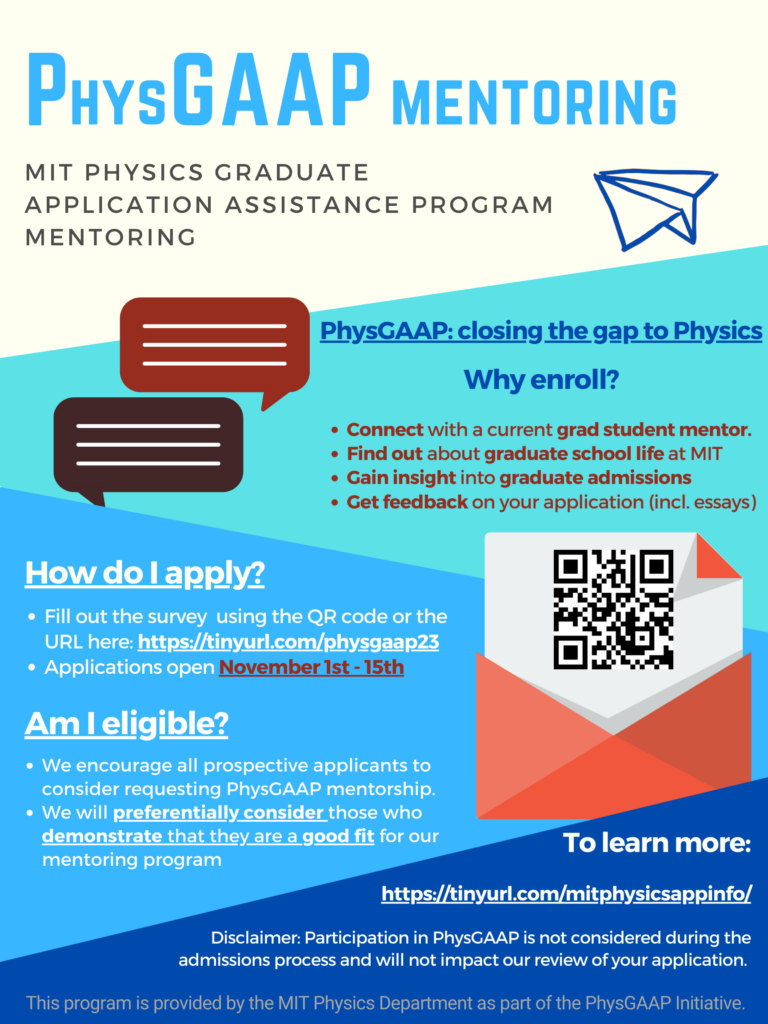
Please note that:
- PhysGAAP Mentoring is only open to students who are planning to apply to graduate schools in Fall 2024 .
- Participation in PhysGAAP is not considered during admissions review. It helps applicants put forward their strongest materials, but does not guarantee admission into our graduate program.
- Any information you submit in the PhysGAAP Mentoring application will only be seen by the PhysGAAP team and your matched mentor.
Admissions/Application FAQs
Our Frequently Asked Questions provide further information about degree requirements, funding, educational background, application deadlines, English language proficiency, program duration, start dates and deferrals, and fee waiver requests.
The MOST Frequently Asked Question…
What is included in a strong graduate application for physics at mit.
Applications are assessed holistically and many variables are considered in the application review process. The following four main factors are required for a complete application.
- the applicant’s statement of objectives or purpose,
- transcripts of past grades,
- score reports of any required standardized tests,
- three letters of reference.
In addition, any past research experience, publications, awards, and honors are extremely helpful, particularly if they are in the area(s) of the applicant’s interest(s). Applicants may also include a personal statement in their application to provide context as the materials are assessed.
Applications are routed to admission committee members and other faculty readers using the “areas of interest” and any faculty names selected from the menu as well as based on the research interests included in the statement of objectives. Please select the areas of interest that best reflect your goals.
Instructions are available in the application itself , with further guidance on our Additional Guidance page. The Physics Admissions Office will respond to questions sent to [email protected] .
General Questions Regarding the PhD Program in Physics
Must i have a degree in physics in order to apply to this graduate program.
Our successful applicants generally hold a Bachelor of Science degree in Physics, or have taken many Physics classes if they have majored in another discipline. The most common other majors are astronomy, engineering, mathematics, and chemistry. Bachelor of Science degrees may be 3-year or 4-year degrees, depending on the education structure of the country in which they are earned.
What are the requirements to complete a PhD?
The requirements for a PhD in Physics at MIT are the doctoral examination, a few required subject classes, and a research-based thesis. The doctoral examination consists of a written and an oral examination. The written component may be satisfied either by passing the 4 subject exams or by passing designated classes related to each topic with a qualifying grade; the oral exam will be given in a student’s chosen research area. The Physics Department also requires that each student take two classes in the field of specialization and two physics-related courses in fields outside the specialty. Research for the thesis is conducted throughout the student’s time in the program, culminating in a thesis defense and submission of the final thesis.
Can I take courses at other schools nearby?
Yes. Cross-registration is available at Harvard University and Wellesley College.
How many years does it take to complete the PhD requirements?
From 3 to 7 years, averaging 5.6 years.
How will I pay for my studies?
Our students are fully supported financially throughout the duration of their program, provided that they make satisfactory progress. Funding is provided from Fellowships (internal and external) and/or Assistantships (research and teaching) and covers tuition, health insurance, and a living stipend. Read more about funding .
Note: For more detailed information regarding the cost of attendance, including specific costs for tuition and fees, books and supplies, housing and food as well as transportation, please visit the Student Financial Services (SFS) website .
How many applications are submitted each year? How many students are accepted?
Although the number varies each year, the Department of Physics usually welcomes approximately 45 incoming graduate students each year. Last year we received more than 1,700 applications and extended fewer than 90 offers of admission.
What are the minimum grades and exam scores for admitted applicants?
There are no minimum standards for overall grade point averages/GPAs. Grades from physics and other related classes will be carefully assessed. Under a special COVID-19 policy, MIT will accept transcripts with a variety of grading conventions, including any special grading given during the COVID-19 pandemic. GRE Tests are not required for graduate applications submitted in 2023. The Physics subject GRE (PGRE) will be optional in 2023 and our department does not require results from the General GRE test.
Our program is conducted in English and all applicants must demonstrate their English language proficiency. Non-native English speakers should review our policy carefully before waiving the TOEFL/IELTS requirements. We do not set a minimum requirement on TOEFL/IELTS scores; however, students who are admitted to our program typically score above the following values:
- IELTS – 7
- TOEFL (computer based) – 200
- TOEFL (iBT) – 100
- TOEFL (standard) – 600
The Application Process
When is the deadline for applying to the phd program in physics.
Applications for enrollment in the fall are due each year by 11:59pm EST on December 15 of the preceding year. There is no admission cycle for spring-term enrollment.
The COVID-19 pandemic has made it difficult for me to take tests in person. Can I still apply?
GRE Tests are not required for graduate applications submitted in 2023. The Physics subject GRE (PGRE) will be optional in 2023 and our department does not require results from the General GRE test.Non-native English speakers who are not eligible for a test waiver should include their results from either an in-person or online version of the TOEFL or IELTS test.
Does the Department of Physics provide waivers for the English language exam (TOEFL/IELTS)?
An English language exam (IELTS, TOEFL, TOEFL iBT, or the C2 Cambridge English Proficiency exam) is required of all applicants who are from a country in which English is not the primary language. Exceptions to this policy will be considered for candidates who, at the start of their graduate studies in 2022, will have been in the US or in a country whose official language is English for three years or longer and who will have received a degree from a college or university in a country where the language of education instruction is English. An interview via telephone, Zoom, or Skype may be arranged at the discretion of the Admissions Committee. More information on a possible English Language Waiver Decision (PDF).
Does the Department of Physics provide application fee waivers?
Although we do not want the MIT application fee to be a barrier to admission, we cannot provide application fee waivers to all who request one. Under-resourced applicants, and applicants who have participated in the MIT Summer Research Program (MSRP), Converge, or another MIT program or an official MIT recruiting visit are eligible for a fee waiver from the MIT Office of Graduate Education (OGE). Please check MIT Graduate Diversity Programs for further details. Departmentally, we have allotted a small number of waivers for applicants who have completed an application (including transcript uploads, and requests for letters of recommendation), but do not qualify for a waiver from the OGE. Fee waiver requests will be considered on a first-come-first-served basis, and not after December 1. Furthermore, applications lacking the paid fee or a fee waiver by 11:59pm EST on December 15 will not be reviewed or considered for admission. Please complete the MIT Physics Departmental Fee Waiver Application Form when you are ready to apply for a departmental waiver. Waivers are not awarded until the application is complete.
Can I arrange a visit to the Physics Department or a specific research area?
Update as of September 23, 2021: In an effort to keep our community safe and healthy, we are not currently hosting or meeting with outside visitors in person, nor are we facilitating visits to our classrooms. Current graduate students and prospective applicants should direct any questions by email to [email protected] .
Applicants are invited to send specific questions to the Physics Admissions Office and some questions may be forwarded to current students for further information.
Can I receive an update on the status of my application?
Candidates will receive email acknowledgments from the Physics Academic Programs Office informing them whether their application is complete, is missing materials, or if further information is needed. Due to the high volume of applications that are received, no additional emails or telephone inquiries can be answered. It is the applicant’s responsibility to ensure that all items are sent.
When will I be notified of a final decision?
Applicants will be notified via email of decisions by the end of February. If you have not heard from us by March 1, please send email to [email protected] .
We do not provide results by phone.
Can admitted students start in a term other than the next Fall semester?
Applications submitted between September 15 and December 15 by 11:59pm EST are assessed for the following Fall semester. We do not provide a separate admission review cycle for the Spring semester. Individual research supervisors may invite incoming students to start their research during the summer term a few months earlier than their studies would normally begin. All other incoming students start their studies in late August for the Fall term.
Once admitted, applicants may request a one-year deferral to attend a specific academic program or for another approved reason, with single semester deferrals for the following Spring term granted only rarely.
- Pre-registration
- Spring registration
- Registration holds
- Add/drop/change
- Understanding your schedule
- Special student registration
- Instructions for Harvard students
- Converting Harvard credits to MIT units
- Translating Harvard grades to MIT grades
- Instructions for Wellesley students
- Other institutions
- General Institute Requirements
- HASS Exploration subjects
- HASS Concentration advisors
- Substitutions within the HASS Requirement
- First-year Essay Evaluation (FEE)
- Subject listing
- CI-H/HW subject selection
- Subject levels & credit
- Declaring a major
- Changing a major
- Double majors
- Declaring a minor
- Limited-enrollment waitlists
- Graduate requirements
- Progressing through MIT — the first year
- Progressing through MIT — beyond the first year
- Choosing to double major
- Transitioning to MIT
- VA education benefits
- Deployment and leave of absence
- Student veteran groups
- Additional resources for veterans
- Academic administrators & officers
- Transfer credit
- Leaves of absence & returns
- Registration load & light load
- Light load tuition
- Summer tuition subsidy
- Special student
- Sloan School of Management
- Visiting student
- Other programs with non-standard tuition
- Miscellaneous fees
- Spring proration
- Summer proration
- Fall proration
- Upcoming spring proration
- Other degree dates & deadlines
- Undergraduate degree requirements
- Graduate degree requirements
- Ordering transcripts
- Express shipping
- Enrollment certifications
- Dean's certifications
- Apostille certifications
- Loan deferment letters
- Subject registration letters
- Paper diplomas
- Digital diploma verification
- Replacement diplomas
- Suppressing directory information
- Advisor access
- Heads of House access
- Address update
- Name changes
- Gender, legal sex & pronouns
- Other biographic information
- Voter registration
- Schedule of classes
Class lists
- Prerequisite reports
- Request a final exam
- Conflict exams
- First year core exams
- Advanced Standing Examinations
- Listener status (auditing)
- First year grading
- Flexible P/NR Grading Option
- Graduate P/D/F Option
- Advanced Standing Exam grades
- Repeating a subject
- Incomplete work
- Changing a grade
- IAP grading
- Calculating GPA
- Giving constructive feedback
- Custom question guidelines
- 1 Preferences
- 2 Teaching Data
- 3 Question Management
- 4 Evaluate Subjects
- Report access & use of data
- History & oversight
- Rules for conducting classes
- Managing limited-enrollment subjects
- Managing CI-H/HW subjects
- Non-Registrar rooms
- Equipment policies
- Event registration
- Room & event resources
- Current projects
- Recent projects
- Advising resources
- Proposing a major
- Proposing a minor
- Proposing a graduate program
- Proposing a HASS subject
- Proposing a HASS Concentration
- Proposing a CI-H/HW subject
- Proposing a CI-M subject
- Cross-listed
- Equivalent with Scheduling Relationship (EQSR)
- School-wide elective
- Special subjects
- Subjects involving digital content
- Prerequisites & corequisites
- Calculating instructional units
- Style guide
- Naming a subject
- Title guidelines: special subjects
- Transcript titles: standard abbreviations
- Subject descriptions
- Catalog & schedule coordinators
- Funded projects
- How to apply
- Additional funding sources
- How to nominate
- Former Fellows
- Event archive
- About Margaret MacVicar
- Program supporters
- 1 Introduction
- 2 Subjects: General Issues
- 3 Subjects: GIR Subjects
- 4 Subjects: The Communication Requirement
- 5 Subjects: First-Year Advising Seminars
- 6 Subjects: ROTC Subjects
- 7 Subjects: IAP Subjects
- 8 Subjects: Enrollment Management
- 9 Guidelines for Preparing Subject Proposals
- 10 Curricula: Majors
- 11 Curricula: Minors
- 12 Petitions
- 13 CoC as Advisory Body to Registrar
- 14 Appendix: Excerpts from Rules and Regulations of the Faculty Regarding Degrees
- 15 Appendix: Excerpts from Rules and Regulations of the Faculty Regarding Grades
- 16 Appendix: Degree Programs - Table of Required Votes
- 17 Appendix: Guidelines for Subject Numbering
- Meeting schedule
- Institute Laboratory substitution
- Restricted Elective in Science and Technology (REST) substitution
- CUP reports
What you need to know
Class lists, based on pre-registration and registration, are available on WebSIS for instructors and department administrators. You can view or print your list, send an email to some or all of the students in your class, download the data for use in a spreadsheet, and view students’ photos.
Class lists based on registration include students registered for academic credit and as listeners. They also indicate those who have added or dropped the subject. Instructional staff are responsible for managing enrollment within the individual sections (lectures, recitations, labs, etc.) of their subjects.
Some key points to remember:
- Your department administrator must grant you access to your class lists.
- Class membership lists in Stellar are synchronized with WebSIS every 15 minutes.
What you need to do
- Department administrators — go to WebSIS, select “ MIT Instructor Assignment ,” and assign the instructors of record to your subjects.
- Instructors — after your department administrator has assigned you to the subject, go to WebSIS and click on the “Class Lists” link.
Access and use of class lists
Academic administrators who are responsible for enrollment information automatically have access to class lists and related records for subjects offered by their department.
- Information from class lists may be shared with other members of the instructional staff, including TAs and administrators assigned to the subject.
- Students’ personal information may not be used for other purposes or shared with other parties.
- Before posting student information to any website, please review MIT Policies and Procedures Section 11.3: Privacy of Student Records .

COMMENTS
MIT is located in Cambridge, Massachusetts, across the Charles River from Boston, in the vibrant innovation district of Kendall Square. Founded in 1865, MIT established a new kind of independent educational institution relevant to an increasingly industrialized America. Since then, the Institute has built a robust tradition of solving problems in the public interest at the intersection of ...
At MIT Admissions, we recruit and enroll a talented and diverse class of undergraduates who will learn to use science, technology, and other areas of scholarship to serve the nation and the world in the 21st century. ... Visit Explore MIT on your own Online info sessions Schedule your campus visit Request a group tour Maps, directions, parking ...
Redefine the material world — and even make a bit of atomic magic. Our faculty and students explore the entire lifecycle of materials, from extraction and manufacturing of raw goods to the distribution, usage, and disposal of products. At MIT, you can go classical with the Glass Lab and Forge, or see the future unfold at MIT.nano (due in 2018).
Kela Roberts USA, VF'19. The MIT Sloan Visiting Fellows Program is a customized course of study that provides students, professionals, and MIT alumni the freedom to explore all that MIT Sloan has to offer, as well as courses across the Institute, while cultivating the skills and tools required to generate impact where it matters most.
MIT class 6.2540 (Nanotechnology: From Atoms to Systems) invites undergrads to spend over nine weeks inside MIT.nano's labs, learning basic skills that allow them to apply their knowledge of the nanoscale to design and build spectrometers, make quantum dots, fabricate light-emitting diodes (LEDs) and tunneling chemical sensors, and test and package their sensors into active displays and systems.
The cost of attendance for the 2023-2024 academic year is $82,730.This number is actually much lower than what it costs MIT to educate students. For more detailed information regarding the cost of attendance, including specific costs for tuition and fees, books and supplies, housing and food as well as transportation, please visit the SFS ...
1. Online Application and Application Fee. MIT Graduate Admissions Online Graduate Application; Application Fee: $75 NOTE: Applicants who feel that this fee may prevent them from applying should send a short email to [email protected] to describe their general reasons for requesting a waiver. We will follow up with information about how to apply for a formal 'application fee waiver'.
4,211. 28. 117. 7,344. 11,920. Not included in above totals: Foreign Study: 5 students in the third year, 11 students in the fourth year. *Number includes 185 students working on Harvard degrees only. **Students in jointly offered majors not included in non-primary department totals.
Class lists based on registration include students registered for academic credit and as listeners. They also indicate those who have added or dropped the subject. Instructional staff are responsible for managing enrollment within the individual sections (lectures, recitations, labs, etc.) of their subjects.